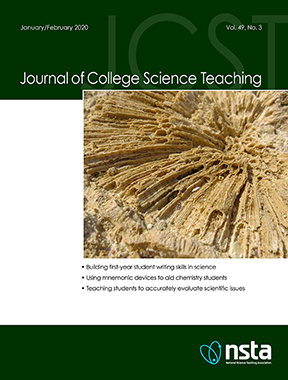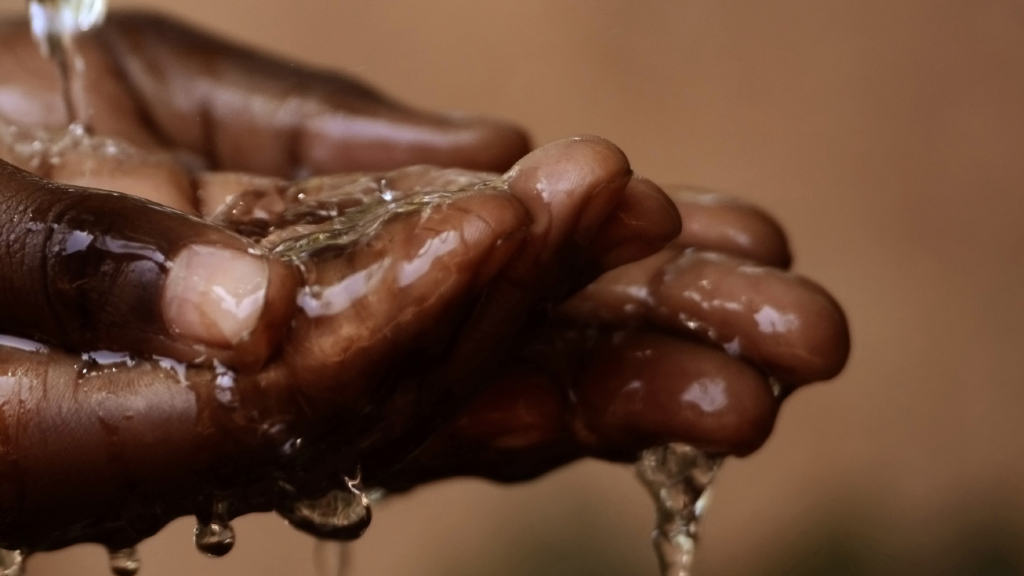
Volume 49, No. 3, January/February 2020

Volume 49, No. 3, January/February 2020

Volume 49, No. 3, January/February 2020
In this lesson, suggested for grades K-2, students learn about bee anatomy and behavior. They develop and test bee models to demonstrate their understanding of the interrelationships between plants and pollinators. After examining some of the controversies around bee decline, they also build a class mason bee hotel and develop educational bee posters to become advocates for the bees. This lesson promises to keep your students very buzzy!. Before beginning the lesson, we recommend reading Units I and IV, which are included in this book selection.
In this lesson, suggested for grades K-2, students learn about bee anatomy and behavior. They develop and test bee models to demonstrate their understanding of the interrelationships between plants and pollinators. After examining some of the controversies around bee decline, they also build a class mason bee hotel and develop educational bee posters to become advocates for the bees. This lesson promises to keep your students very buzzy!. Before beginning the lesson, we recommend reading Units I and IV, which are included in this book selection.
How Can We Provide Water for Developing Countries? 5E Unit Empowers Students to Solve the Global Water Crisis

Students use science knowledge and engineering skills to address a significant real-world problem.
Students use science knowledge and engineering skills to address a significant real-world problem.
Students use science knowledge and engineering skills to address a significant real-world problem.
This chapter provides recommendations for translating standards into instructional materials that are usable for those with the real task of teaching. The discussion provides an affirmative answer to the question: How can the BSCS 5E Instructional Model be used to implement the Next Generation Science Standards (NGSS)? The chapter draws on insights the author gained during his work on both the National Science Education Standards (NRC 1996) and the NGSS (NGSS Lead States 2013).
This chapter provides recommendations for translating standards into instructional materials that are usable for those with the real task of teaching. The discussion provides an affirmative answer to the question: How can the BSCS 5E Instructional Model be used to implement the Next Generation Science Standards (NGSS)? The chapter draws on insights the author gained during his work on both the National Science Education Standards (NRC 1996) and the NGSS (NGSS Lead States 2013).
Preservice Teachers Step into the Future of Science Education at NSTA Minneapolis Fall 2025
By Laci Hoover
Posted on 2025-12-15

January is for Advocacy: NSTA Legislative Initiatives for 2026
Join members of NSTA’s Legislative and Advocacy Team on Wednesday, January 14, 2026, from 7:00 PM to 8:00 PM ET, as we discuss the new year ahead, including Congressional action around education and the Administration’s plan to transfer day-to-day administration of major K–12 programs from the U.S. Department of Education to other agencies. You’ll also get an inside look at the new NSTA Legislative Action Center and learn how you can get involved.
Topics to be discussed:
Join members of NSTA’s Legislative and Advocacy Team on Wednesday, January 14, 2026, from 7:00 PM to 8:00 PM ET, as we discuss the new year ahead, including Congressional action around education and the Administration’s plan to transfer day-to-day administration of major K–12 programs from the U.S. Department of Education to other agencies. You’ll also get an inside look at the new NSTA Legislative Action Center and learn how you can get involved.
Topics to be discussed:
Join members of NSTA’s Legislative and Advocacy Team on Wednesday, January 14, 2026, from 7:00 PM to 8:00 PM ET, as we discuss the new year ahead, including Congressional action around education and the Administration’s plan to transfer day-to-day administration of major K–12 programs from the U.S. Department of Education to other agencies. You’ll also get an inside look at the new NSTA Legislative Action Center and learn how you can get involved.
Topics to be discussed:
Join members of NSTA’s Legislative and Advocacy Team on Wednesday, January 14, 2026, from 7:00 PM to 8:00 PM ET, as we discuss the new year ahead, including Congressional action around education and the Administration’s plan to transfer day-to-day administration of major K–12 programs from the U.S. Department of Education to other agencies. You’ll also get an inside look at the new NSTA Legislative Action Center and learn how you can get involved.
Topics to be discussed:
Press Release
NSTA Brings Science to Life This Holiday Season with Four Inspiring New Children’s Trade Books
Building Futures: How Science Coaches Empower Title I Students Through Technology and Innovation
By Jason Strohl
Posted on 2025-12-10

Press Release


